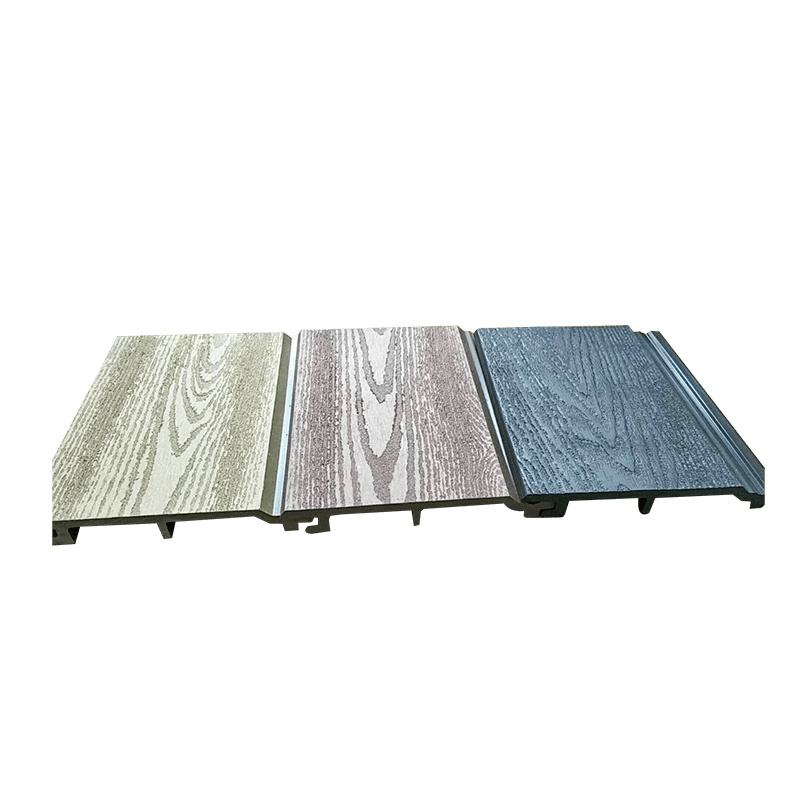Provide you with the latest enterprise and industry news.
With the rapid development of the building decoration materials market, consumers have higher and higher requirements for the performance, appearance and environmental protection characteristics of materials. As a new type of building material, WPC wall panels (Wood-Plastic Composite Wall Panel) have quickly occupied a place in the market due to its unique advantages and broad application prospects.
WPC wall panels are a composite material made of wood powder or wood fiber and plastic substrate through high temperature and high pressure extrusion molding process. Wood powder usually comes from waste wood, sawdust or bamboo fiber, while the plastic part is mostly made of polyethylene (PE), polypropylene (PP) or polyvinyl chloride (PVC). The original intention of the design of this material is to combine the natural appearance of wood with the durability of plastic to provide an alternative product that is both environmentally friendly and durable.
Wood powder and plastic materials are strictly proportioned and processed to form a high-density composite material. This material not only retains the texture and texture of wood, but also has the advantages of plastic such as waterproof, anti-corrosion and anti-insect, and can adapt well to various indoor and outdoor environments.

The raw materials of WPC wall panels are mostly recycled wood and renewable plastics, which not only reduces the consumption of natural resources, but also effectively reduces the pollution of waste to the environment. In addition, WPC materials can be recycled again after the end of their service life, further enhancing their environmental friendliness.
Compared with traditional wood, WPC wall panels have higher durability. It is not easily affected by moisture, cracking or deformation, nor is it affected by insects, and is particularly suitable for use in humid or harsh environments. Even under long-term exposure to sunlight and rain, WPC wall panels can maintain their shape and color.
WPC wall panels do not need to be painted, waxed or treated with antiseptic treatment as frequently as traditional wood, reducing maintenance costs. This is undoubtedly an ideal choice for consumers who pursue low maintenance costs and efficient use experience.
WPC wall panels can achieve a variety of surface treatment effects, including wood grain, stone grain, matte and high gloss, through different molds and processes. This allows WPC wall panels to simulate almost any natural material in appearance and meet the decoration needs of different styles.
The installation process of WPC wall panels is relatively simple, and they can be quickly fixed to the wall by means of clips, screws or glue. Its lightweight design is also easy to carry and install, saving a lot of time and labor costs.
WPC wall panels are widely used in interior decoration in homes, offices, hotels, etc. Its natural wood grain effect can add a sense of warmth to the interior space, while its moisture-proof and insect-proof properties ensure the stability of the wall panels in different environments.
Due to its excellent waterproof performance, WPC wall panels are increasingly used in humid environments such as bathrooms and kitchens. Whether as wall decoration or as partition materials, WPC wall panels can provide excellent waterproof protection and easy-to-clean surfaces.
In the decoration of commercial spaces, WPC wall panels are highly favored for their durability and easy maintenance. By using WPC wall panels in shopping malls, exhibition halls, restaurants and other places, not only the decorative effect is improved, but also the long-term maintenance costs are reduced.
WPC wall panels are not only suitable for interior decoration, but also widely used in outdoor decoration due to their excellent weather resistance, such as balconies, courtyard walls, building exterior walls, etc. WPC wall panels can resist UV radiation and extreme weather conditions, ensuring the beauty and durability of outdoor decoration.
With the improvement of environmental awareness and the continuous advancement of technology, WPC wall panels have a broad development prospect in the future. Here are some possible development trends:
In the future, with the advancement of material science, WPC wall panels may introduce more new materials and processes to improve their performance and environmental friendliness. For example, adding natural mineral fillers or using bio-based plastics to further reduce the impact on the environment.
Future WPC wall panels may integrate more functional features, such as antibacterial, fireproof, soundproof, etc., and even have intelligent sensing functions to meet the needs of specific scenarios.
With the increase in consumer demand for personalization and customization, the design of WPC wall panels will be more diversified. Manufacturers may provide more customization options, including color, texture, size, etc., to meet the needs of different customers.
As the advantages of WPC wall panels are recognized by more and more markets, its global expansion will be further accelerated. Especially in developing countries and emerging markets, the demand for WPC wall panels will show a rapid growth trend.
As a new type of environmentally friendly building material, WPC wall panels are rapidly replacing traditional wood and other decorative materials with their excellent performance and diverse design options. With the continuous advancement of technology and changes in market demand, the application field of WPC wall panels will be more extensive and its market prospects will be brighter. Whether in home decoration, commercial space decoration, or outdoor applications, WPC wall panels will continue to play their unique role and provide better quality and more environmentally friendly solutions for modern architectural decoration.



 English
English Español
Español














